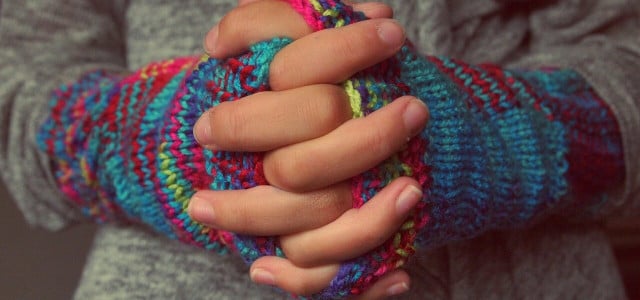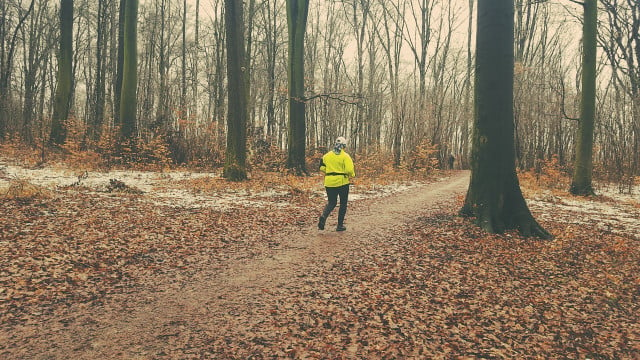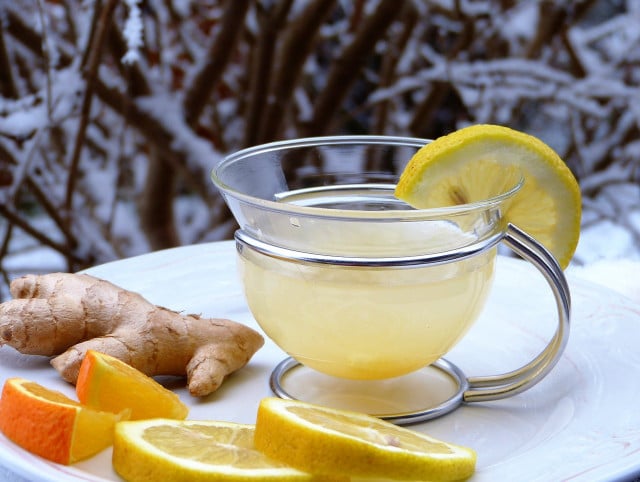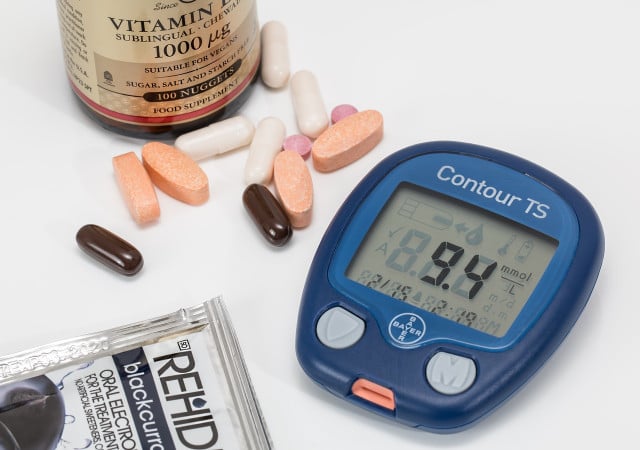
Cold hands plague many people, especially in winter. We will explain the causes to you and show you how your hands can become warm again and have good blood circulation.
Those who suffer from chronically cold hands have a particularly difficult time in winter. Many people use external heat, for example in the form of a hot-water bottle, a cherry pit pillow or a hot cup of tea in their hands. However, heating water or body pillows costs energy and can mean disruptive interruptions to everyday work.
But there are natural and healthy ways to get rid of your cold hands for a longer period of time – so that they stay comfortably warm even after the cup of tea is empty.
We’ll explain what causes chilly hands, why some suffer from it more than others, and what you can do to make your hands stay warm by themselves from now on.
Hormonal cause: This is why women often have cold hands
Women in particular often seem to suffer from cold hands: since they have less muscle mass on average than men, they get cold more quickly overall. With the same weight, they have an average larger body surface. That means more blood vessels are exposed to the cold.
There are also hormonal differences: women have more estrogen, which dilates the blood vessels. In this way, all organs – including the uterus and a baby growing in it – can be better cared for. Estrogen also makes women react more quickly to cold: it constricts blood vessels at lower temperatures. This reduces blood flow. The body loses heat more slowly, but the feeling of cold also increases.
But: Not every woman freezes faster than every man. And both women and men can protect themselves from heat loss.
Cold hands bleed through movement

(Photo: CC0 / Pixabay / magdalenaszpunt)
Cold hands can be a sign that you have poor circulation. People in office jobs in particular often suffer from poor blood flow: If you sit a lot, your legs and arms don’t get optimal blood flow. You then feel something like tingling in your legs or hands, or even shiver.
Your neck and back muscles can also become tense from sitting too much. This can also prevent your body from getting proper blood flow. Oxygen can no longer be transported properly, which in the worst case can lead to dizzy spells.
But what can you do?
- Regular exercise: find a sport that you enjoy and try to do it regularly. If you find it difficult to motivate yourself to exercise, check out our guide. Important for the winter: Find out to what extent you can practice your sport in sub-zero temperatures.
- Frequent walks: Even for those who don’t exercise, a walk after work or sitting in the library for a long time is like medicine for your muscles and blood vessels.
- Gymnastics at work: Try to incorporate short exercises into your everyday work. Get up more often to get a glass of water, stretch your arms and legs, open and close your hands with your fingers spread. And even if you have to stay seated for a long time, it helps to learn how to sit properly. You can do yoga exercises for the home office again and again without equipment and a lot of space in between.
- Stretch your back: We’ll show you how to incorporate quick and efficient back exercises into your everyday life. Releasing your tension can help with blood flow and just feels better.
- Don’t let the winter intimidate you: right now you should get enough exercise. Wrap up warm and try to breathe fresh forest air regularly. You don’t have to be physically active to do this. Pure forest bathing is also very good.
- And don’t forget: always have the right gloves with you. It is best to use pairs of insulating and high-quality materials. Avoid synthetic materials like polyester. Products made from it often look particularly warm and cuddly, but hardly insulate. Depending on whether you use the gloves for long walks, sports, or even gardening, you need different materials. See our winter gloves guide: How to decide which ones you need.
Leaderboard: Outdoor clothing: the best brands
-
 1st placepyua
1st placepyua
4.8
16
DetailBergzeit**
 place 2Elkline
place 2Elkline
4.7
22
DetailElkline**
 place 3climbing muses
place 3climbing muses
4.4
7
DetailMountain Friends**
 4th placeVaude
4th placeVaude
3.5
8th
DetailAvocadostore**
 5th placePatagonia
5th placePatagonia
5.0
2
DetailAvocadostore**
 Rank 6Triple2
Rank 6Triple2
5.0
2
detail
 7th placeOdlo
7th placeOdlo
5.0
1
DetailAbout You**
 8th placePicture Organic Clothing
8th placePicture Organic Clothing
5.0
1
DetailMountain Friends**
 9th placeEngel Sports
9th placeEngel Sports
4.2
5
DetailAmazon**
 Place 10Schöffel
Place 10Schöffel
3.5
2
DetailSchöffel**
Healthy diet against cold hands

A hot lemon warms you up and provides you with enough vitamin C.
(Photo: CC0 / Pixabay / silviarita)If you suffer from cold hands or general sensitivity to cold, this can indicate a deficiency in your diet. Vitamins and trace elements are important for a strong immune system.
- Therefore, make sure you are getting enough vitamin C and zinc, especially in winter.
In addition, a lack of iron can make you often cold. Here, too, women are more frequently affected, since their menstrual period can have a significant impact on their iron balance. Vegetarians and vegans also often suffer from iron deficiency, since our body cannot absorb plant-based iron so well.
- Vitamin C helps those affected to bind iron better.
- In addition, vegetarians can eat the iron-rich foods explained in more detail in our guide.
You should only take dietary supplements if your doctor has diagnosed a deficiency. Otherwise you could be consuming too much of the nutrients.
Also, don’t forget to drink plenty of water. With the low temperatures, it can be difficult to reach for a water bottle regularly. However, too little fluid in your bloodstream causes the blood to thicken and flow more slowly.
- Our tip: always take a pot of tea or hot lemon with you. This will help you drink fluids regularly and also warm up. (You can find stylish, environmentally friendly and BPA-free drinking bottles in our list of the best)
Avoid stress & get lots of sleep

Not only sitting at work causes circulatory disorders.
(Photo: CC0 / Pixabay / StockSnap)Those who suffer a lot from stress are more often tense due to constant nervousness. This feeling of stress can develop into an anxiety disorder – many anxious patients suffer from a feeling of “bloodless” hands. A feeling of fear triggers an escape response in the body, whereupon adrenaline is released. Blood pressure rises and the heart pumps faster to supply vital organs. “Unimportant” body parts such as hands and feet are then undersupplied.
Depending on where your stress is coming from, you could prevent cold hands from stress by doing the following:
- Try meditation or autogenic training. You can register for a course or do a guided meditation on YouTube or via an app. Find a relaxation technique that works for you.
- Make a to-do list to plan efficiently. Feelings of stress often arise because you have lost track of your tasks. Once you organize them, they seem more harmless to you.
- Many people who suffer from stress often reach for a cigarette. For a short time, nicotine increases blood pressure, which can lead to a feeling of warmth. But in the long run, according to a study, the pollutants contained can lead to arteriosclerosis, a pathological change in the blood vessels, which can also disrupt the blood flow in and to the hands.
- Gradually improve your time management to prevent stress in the long term.
- Learn to use your time in nature against stress.
Illness-related cold hands

Diabetes and other diseases can also cause cold hands.
(Photo: CC0 / Pixabay / stevepb)Chronic cold hands can also indicate a more serious condition, such as:
- Heart diseases (e.g. consequences of a heart attack, bradycardia)
- Hormonal disorder (e.g. hypothyroidism)
- diabetes
- Autoimmune diseases (e.g. rheumatism)
- Raynaud’s Syndrome
With heart diseases of all kinds, the blood circulation can be disturbed and lead to cold hands. But especially with the so-called bradycardia, patients have a steadily slower heartbeat and thus chronically low blood pressure. In order to supply the heart with sufficient blood, there is often not enough blood flowing to peripheral parts of the body such as the hands.
One of the causes of bradycardia can be the so-called hypothyroidism. In this disease, certain hormones that are important for metabolism are produced less. As a result, various metabolic functions run more slowly, including blood circulation throughout the body. This leads to feelings of weakness and an increased sensitivity to cold – especially in the hands and feet. In this case, it has been proven that you can alleviate the symptoms of the disease by taking in the trace element selenium.
Blood vessel regulation also gets out of sync with diabetes. Constantly high blood sugar can lead to the nerves being attacked and what is known as “peripheral neuropathy” develops. Blood flow to the damaged nerves in the arms and hands, legs and feet can thus be disrupted in severe diabetes, whereupon poor circulation causes them to become cold.
In autoimmune diseases such as rheumatism, too, inflamed nerves in the joints are responsible for disrupting blood flow. The wrists and finger joints are usually the first to be affected.
If a “bloodless” feeling in your fingers actually causes you pain, you may have Raynaud’s Syndrome. With this disease, patients experience vascular spasms that occur in very sudden attacks. You can recognize this above all by the fact that your hands, but also your feet, nose or earlobes, turn pale and bluish. Eventually, they can even become very red. The syndrome is usually a consequence of other autoimmune diseases and women also suffer from this syndrome more often. By making lifestyle changes and reducing stress, you can manage these symptoms as well. However, in the event of severe symptoms, always consult a doctor!
Read more on Techzle.com:
- Taking a cold shower: it’s so good for your health
- Resilience: How to train your mental resilience
- Relieve tension: This is how you get rid of pain in your shoulder, neck and back
- Hand massage: Instructions for a soothing massage
Recent Articles
Related Stories